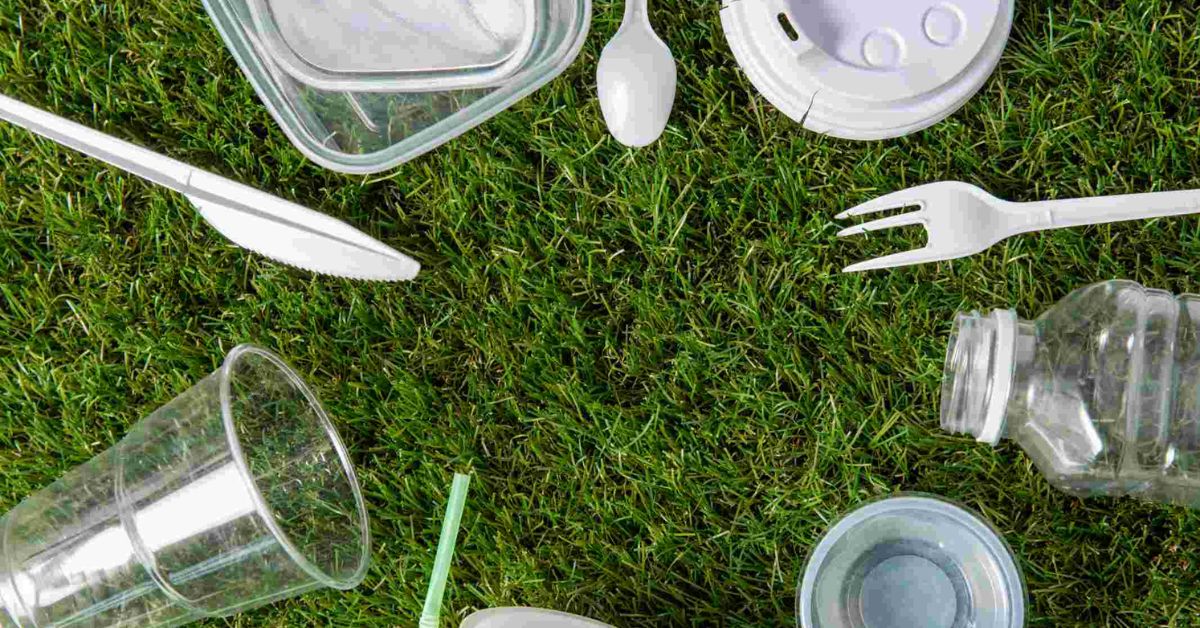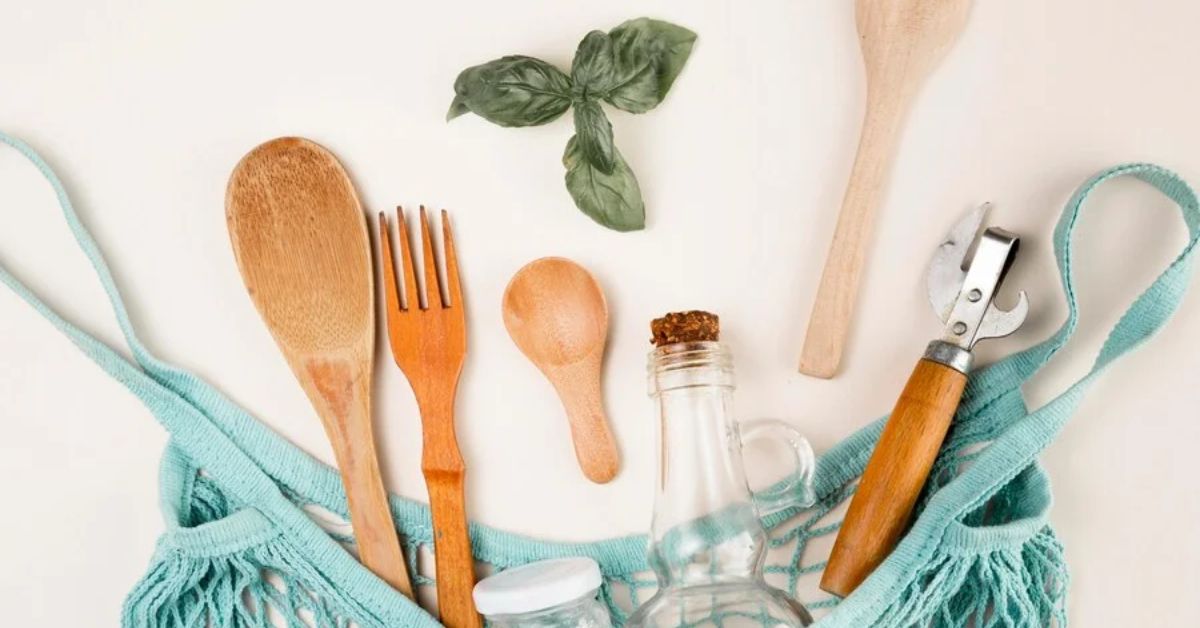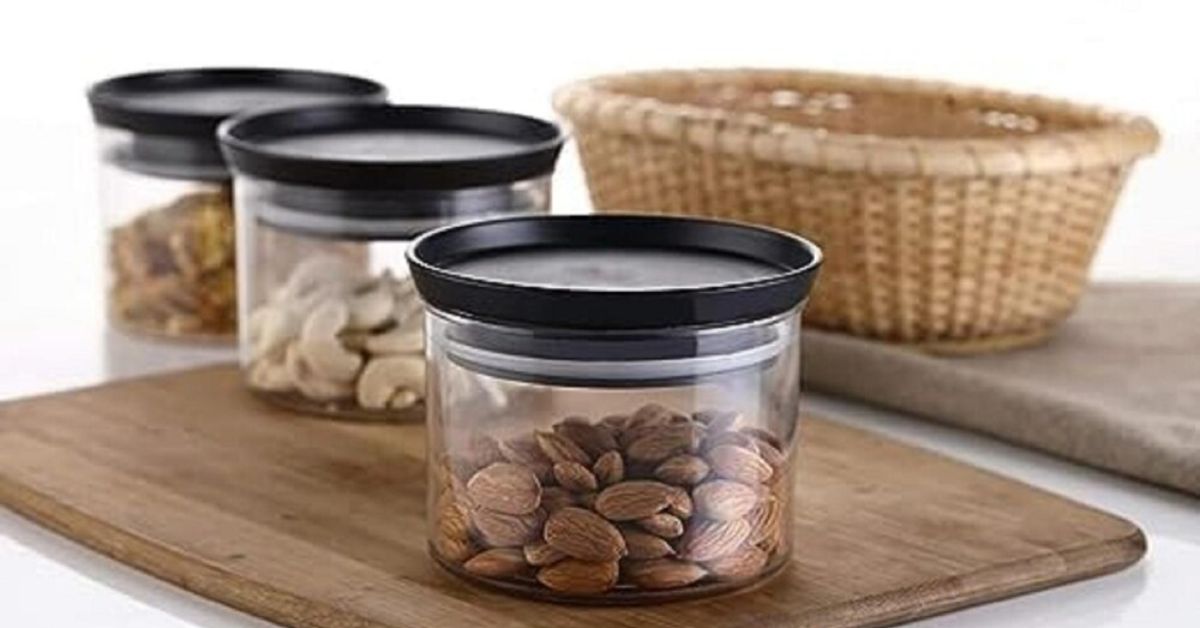Transform Your Kitchen: 10 Sustainable Products That Actually Work
I know how overwhelming a “plastic-free kitchen” can sound—especially when you’re staring at cling film, stained containers, and a drawer full of zip bags. The goal isn’t perfection. It’s cutting daily plastic exposure without wrecking your routine or budget.
Here’s the plan I wish someone handed me sooner: focus on a few high-impact swaps that touch heat, oil, and acid first (that’s where plastic is most problematic). Then layer in simple upgrades for storage, prep, and groceries so the changes stick.
In this guide, I’ll share 10 essentials that actually earn their place on your counter—no greenwashing, no clutter. You’ll get why each swap matters, how to use it right, what to avoid, and the order to buy so you don’t overspend.
Before we dive in, tell me this: which plastic item bugs you most—cling film, take-away boxes, or zip bags? Drop one, and I’ll prioritize that swap for you.
Why a Plastic-Free Kitchen Matters?
Health Risks of Plastic in the Kitchen
I’ll be honest—once you learn how much plastic can creep into your food, it’s hard to unsee it. Chemicals like BPA and phthalates are commonly found in plastic containers, wraps, and even utensils. When these plastics touch hot food or acidic meals like tomato curry or lemon water, the heat and acid speed up chemical leaching. That means traces of those compounds end up in your food and, eventually, in your body.
Over time, research has linked these chemicals to hormonal imbalances, fertility issues, and even certain cancers. And let’s not forget microplastics—tiny fragments that can make their way into our bloodstream and organs. Think about it: reheating leftovers in a plastic tub or leaving hot dal in a takeout box overnight isn’t just a convenience—it’s an invisible health risk.
Quick takeaways:
- Avoid microwaving food in plastic containers.
- Store hot meals in glass or stainless steel, not plastic.
- Swap single-use plastic wraps for safer, reusable options.
Environmental Impact of Kitchen Plastic

Every time we toss a plastic grocery bag or a disposable fork, it doesn’t just “go away.” It piles up. Globally, over 400 million tons of plastic waste are generated each year, much of it from food packaging and kitchen use. A huge portion ends up in oceans, where it breaks down into microplastics that fish—and eventually humans—consume.
Kitchen plastics also carry a carbon cost: manufacturing single-use items burns fossil fuels, driving climate change. So when you swap cling film for beeswax wraps or plastic straws for stainless steel ones, you’re not just reducing clutter—you’re cutting into a bigger global problem.
If you want a deeper look into how microplastics sneak into our diets, the BBC has a great explainer.
Quick takeaways:
- Kitchen plastics don’t biodegrade; they just break into smaller pollutants.
- Single-use kitchen items have one of the highest carbon footprints in the home.
- Every small swap contributes to less ocean and landfill waste.
Cost vs. Long-Term Benefits
One hesitation I hear a lot is: “But aren’t plastic-free swaps expensive?” At first glance, yes—a set of glass containers costs more than a pack of plastic tubs. But here’s the difference: you buy glass once and use it for years. Plastic warps, stains, and cracks quickly, pushing you to keep buying more.
In fact, I’ve seen people on Reddit and Instagram share that switching to reusable glass containers saved them nearly $200 a year in replacement costs and reduced their weekly trash load. It’s not just about saving the planet; it’s about saving your wallet too.
Quick takeaways:
- Glass, bamboo, or steel items last longer and don’t need constant replacement.
- You reduce both shopping trips and waste disposal costs.
- The upfront investment pays for itself within months.
How to Transition Your Kitchen to Plastic-Free
Step 1 – Audit Your Kitchen
Before you run out and buy every “eco-friendly” product on the shelf, start with an audit. Look around your kitchen and identify the plastic-heavy zones:
- Food storage containers
- Grocery bags
- Wraps and foils
- Cooking utensils
Here’s a simple trick: take a photo of your kitchen. When you see it as an image, the plastic hotspots jump out more clearly. This step helps you prioritize instead of feeling overwhelmed.
Step 2 – Swap Smartly
You don’t need to replace everything overnight. Start with the things you use most often, especially those that touch hot food or drinks.
Smart swaps to begin with:
- Plastic cling film → beeswax or silicone wraps
- Plastic water bottles → stainless steel bottles
- Plastic spatulas → bamboo or wooden utensils
By swapping one habit at a time, you’ll feel progress without stressing your budget.
Step 3 – Create a Maintenance Habit
The hardest part isn’t buying new items—it’s sticking to them. If you’re not intentional, plastic creeps back in. The best way to prevent this is to build habits around your kitchen routines.
- Label shelves so reusable containers are always within reach.
- Keep mesh grocery bags near your keys so you don’t forget them.
- Do a weekly check: if new plastic items sneaked in, replace them right away.
Remember, this isn’t about perfection. It’s about consistent, mindful progress that adds up over months and years.
So tell me—if you had to pick just one item to swap out today, what would it be: cling film, water bottles, or storage containers?
10 Must-Have Plastic-Free Kitchen Items

1. Glass Storage Containers
If there’s one investment I’d recommend first, it’s glass containers. They’re non-toxic, microwave and dishwasher safe, and unlike plastic tubs, they don’t stain or warp. Storing leftovers in glass means no chemical leaching, even when reheated.
2. Stainless Steel Water Bottles & Drinkware
Every disposable plastic bottle you skip makes a difference. A sturdy stainless steel bottle keeps drinks cold or hot for hours, and it lasts for years.
3. Bamboo or Wooden Utensils
Plastic spatulas and ladles often release chemicals when exposed to high heat. Bamboo or wooden utensils are naturally heat-resistant and biodegradable. Just make sure they don’t have plastic-coated handles, which defeat the purpose.
4. Beeswax or Silicone Food Wraps
Cling film is one of the biggest kitchen plastic culprits. Beeswax wraps or reusable silicone covers are simple, affordable swaps that keep food just as fresh. According to EatingWell, beeswax wraps can last up to a year if cared for properly.
5. Cotton or Mesh Produce Bags
Think of all the thin plastic bags you grab for veggies at the store—they pile up quickly. Cotton or mesh produce bags do the same job without the waste. Keep a few in your backpack or car so you never forget them.
6. Ceramic or Glass Dishware
Many homes still rely on plastic or melamine plates. The issue? They release microplastics when scratched or heated. Ceramic or glass plates, bowls, and mugs are safe, sturdy, and timeless.
7. Stainless Steel Straws & Cutlery
If you eat out or grab drinks often, this one’s a game-changer. A small kit with a stainless steel straw and cutlery set eliminates the need for disposable forks and straws. Portable and easy to clean.
8. Compost Bin or Waste Segregator
Going plastic-free isn’t only about storage—it’s about how you handle waste. A small compost bin or waste segregator in your kitchen helps divert organic matter from landfills and reduces your reliance on plastic trash bags.
9. Silicone Baking Mats & Muffin Cups
Instead of parchment paper or cupcake liners, reusable silicone mats and muffin cups offer a non-stick, waste-free alternative. They’re easy to clean and last for years, saving both money and trash.
10. Plastic-Free Storage Jars & Spice Containers
Glass or stainless steel jars aren’t just practical—they make your shelves look beautiful. Use them for spices, grains, and snacks. A quick label makes your kitchen more organized and easier to navigate.
Out of these 10 swaps, which one do you feel ready to try first? For me, glass containers and beeswax wraps were the easiest wins—they made my kitchen feel healthier overnight.
Mistakes to Avoid When Going Plastic-Free
Buying Too Many Unnecessary Items
When I first tried to go plastic-free, I made the mistake of buying every “eco-friendly” product I saw. The truth is, you don’t need a brand-new set of everything. Start with the essentials you use daily, like containers, wraps, or bottles. Adding too much at once not only costs more but also creates clutter—the very thing you’re trying to reduce.
Tip: Pick one or two swaps, stick with them, and expand slowly.
Not Checking Labels
Just because something says “biodegradable” or “BPA-free” doesn’t mean it’s truly plastic-free. Many “eco” products are still lined with hidden plastics that don’t break down easily. Always check what materials are actually used, and look for glass, stainless steel, bamboo, or uncoated natural fibers.
Tip: Do a quick Google search or check brand reviews before buying.
Overlooking Maintenance
Reusable items only work if you maintain them. Glass containers need proper sealing, beeswax wraps need gentle washing, and bamboo utensils last longer if they’re not soaked in water. If you ignore upkeep, you’ll end up back where you started—buying replacements.
Proper upkeep goes a long way in keeping your space safe. Beyond plastics, make sure you tackle hidden dirt — here’s a list of 9 Hidden Germ Havens in Your Kitchen and How to Clean Them Fast that will surprise you.
Tip: Create small routines, like washing wraps with cool water or air-drying jars before reuse.
Quick Wins and DIY Alternatives

Simple DIY Plastic-Free Swaps
You don’t always have to buy something new. Many plastic-free solutions can be made at home with things you already have:
- Mason jars for storing grains, pulses, or snacks.
- Repurposed glass bottles from sauces or juices as water bottles.
- Homemade beeswax wraps using cotton cloth and beeswax pellets.
These swaps are cost-effective and sustainable, making them perfect entry points if you’re starting small. While you’re creating a healthier kitchen environment, consider adding some greenery too. Our roundup of 10 Kitchen-Friendly Houseplants You’ll Regret Not Buying Sooner shows you which plants purify the air and brighten your space effortlessly.
Time-Saving Tips
Going plastic-free doesn’t have to feel like extra work. With a little planning, it actually makes your kitchen more efficient:
- Batch prep meals in glass containers so you’re not scrambling for plastic tubs.
- Carry reusable bags and wraps in your car or backpack so you never get stuck using disposables.
- Keep a “ready-to-go” drawer with steel straws, utensils, and wraps so swaps become second nature.
If you’re looking for more practical kitchen hacks to speed things up, Wellcure has a great guide on simple steps for a plastic-free kitchen.
Wrap-Up
Let’s bring it all together. If you want to make your kitchen truly plastic-free, here’s a simple roadmap you can follow without getting overwhelmed:
- Audit your kitchen – Spot the plastic hotspots (containers, wraps, utensils).
- Start with smart swaps – Replace daily-use items like cling film, bottles, and storage tubs.
- Build habits – Keep reusable bags handy, label shelves, and set small routines to maintain your swaps.
- Add DIY solutions – Repurpose jars, try homemade wraps, and compost food waste.
- Stay consistent – Make one change at a time, and celebrate small wins along the way.
You can even turn this into a personal checklist or a simple infographic for your fridge to track your progress. If you’re also planning a full kitchen refresh along with these swaps, don’t miss our guide on 10 Best Kitchen Cabinet Hardware Ideas to Transform Your Kitchen in 2025 — it’s a simple way to elevate your space while staying functional and stylish. Small, steady steps are what make the shift sustainable.
Now it’s your turn: Which swap feels easiest for you to start with—glass containers, beeswax wraps, or bamboo utensils? Drop your answer in the comments, I’d love to know how you’re starting your plastic-free journey.
For more practical home improvement tips and eco-friendly living ideas, explore Build Like New — your guide to creating a healthier, smarter home.
Disclaimer: The information in this article is for general educational purposes only. It should not be taken as medical or professional advice. Always check product materials and consult trusted sources before making changes in your kitchen or lifestyle.


